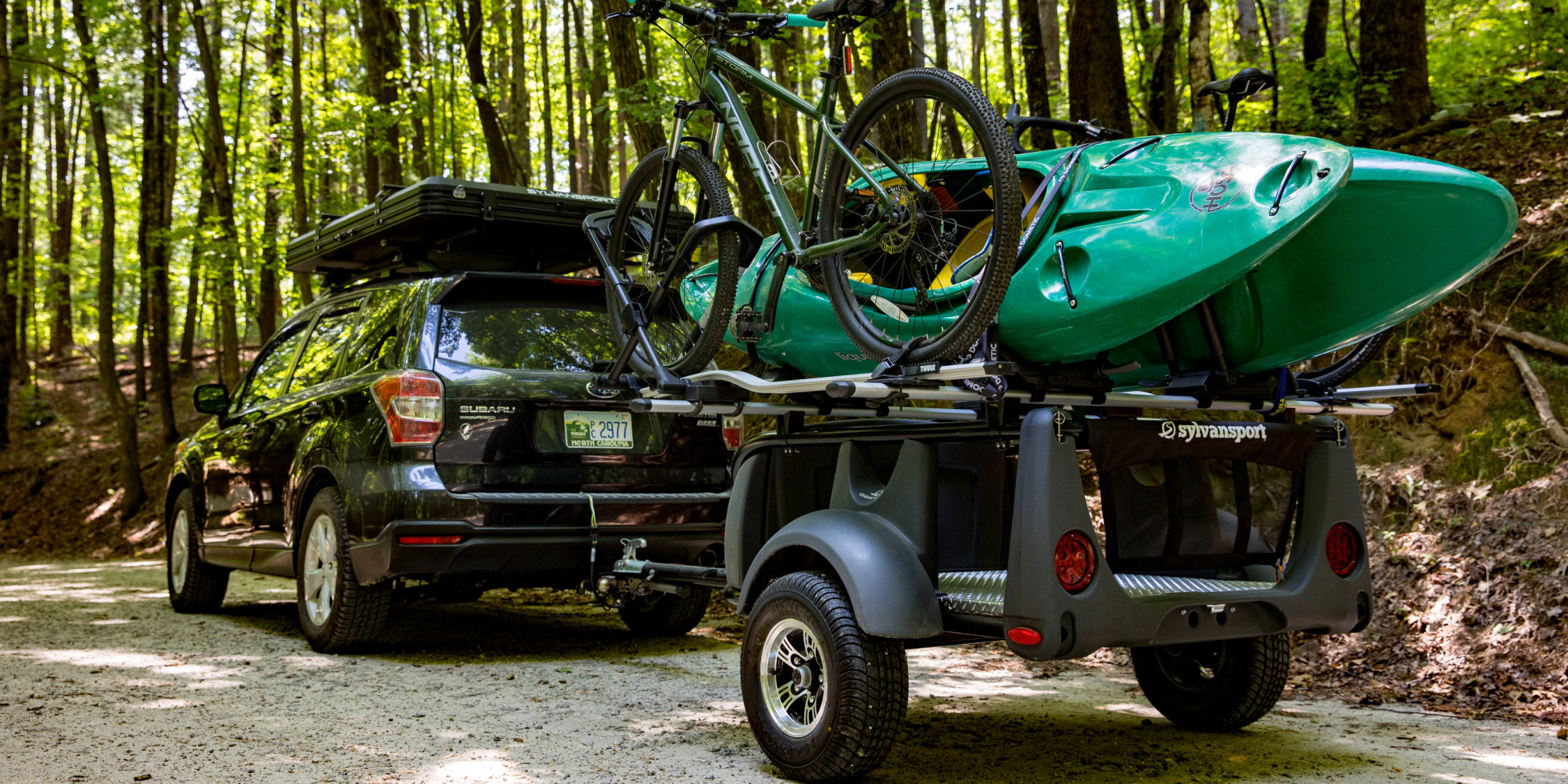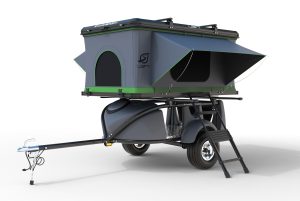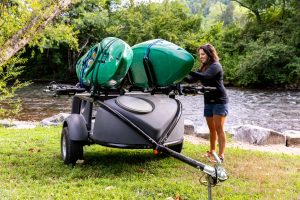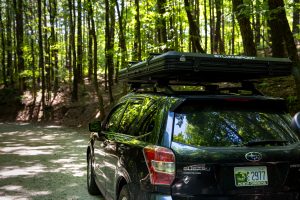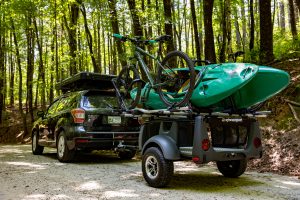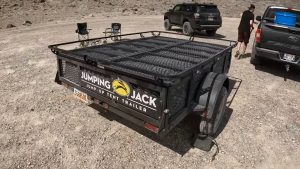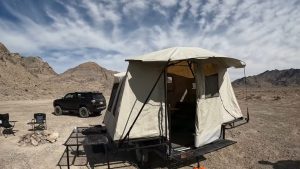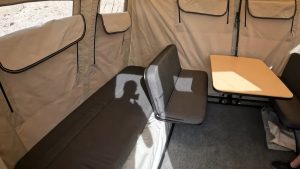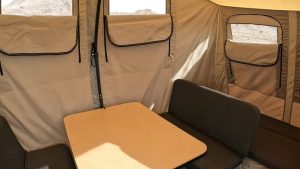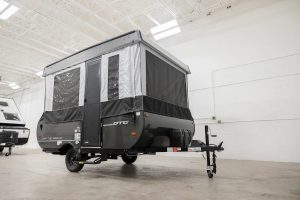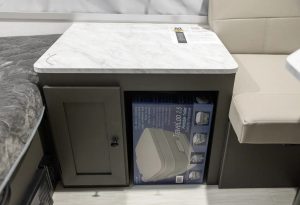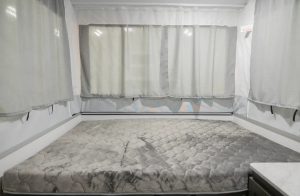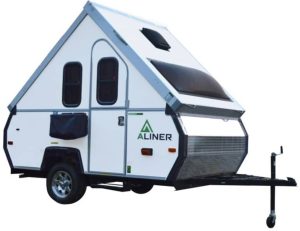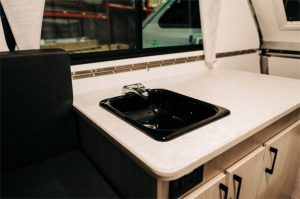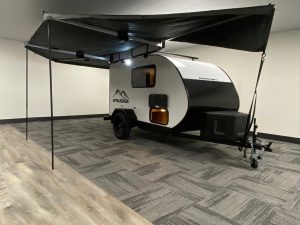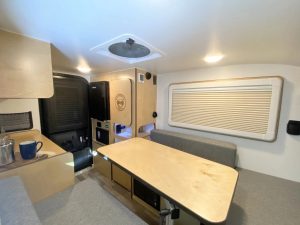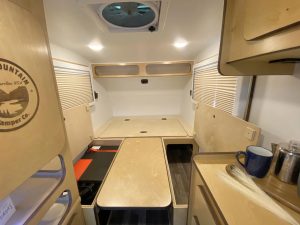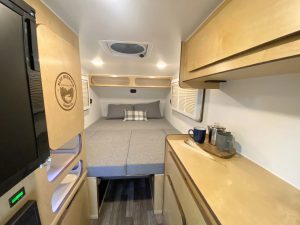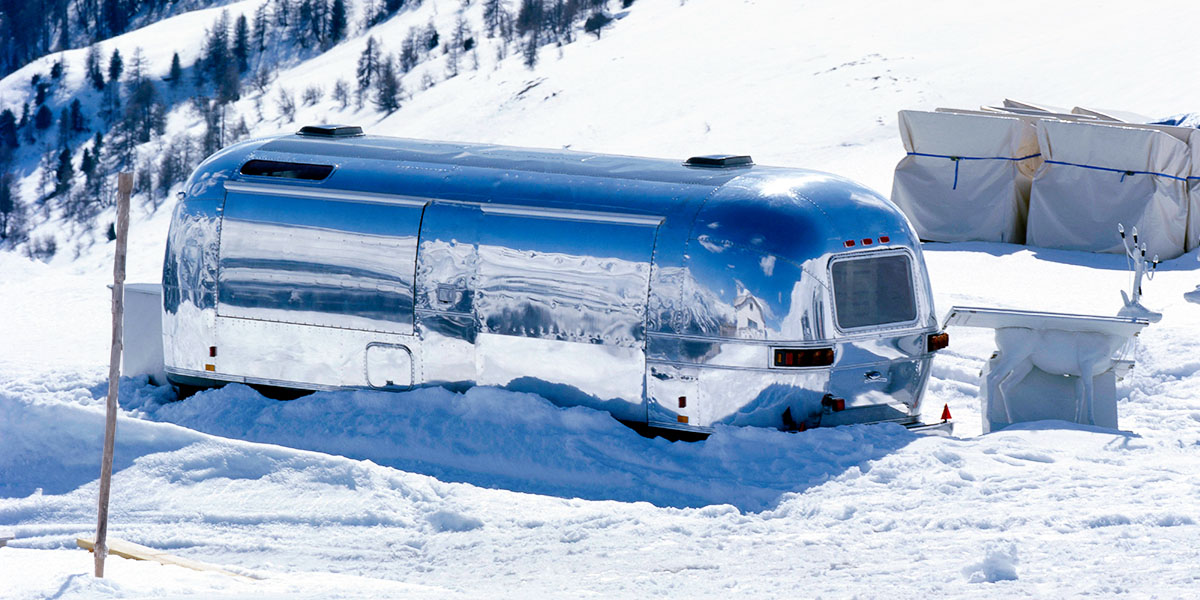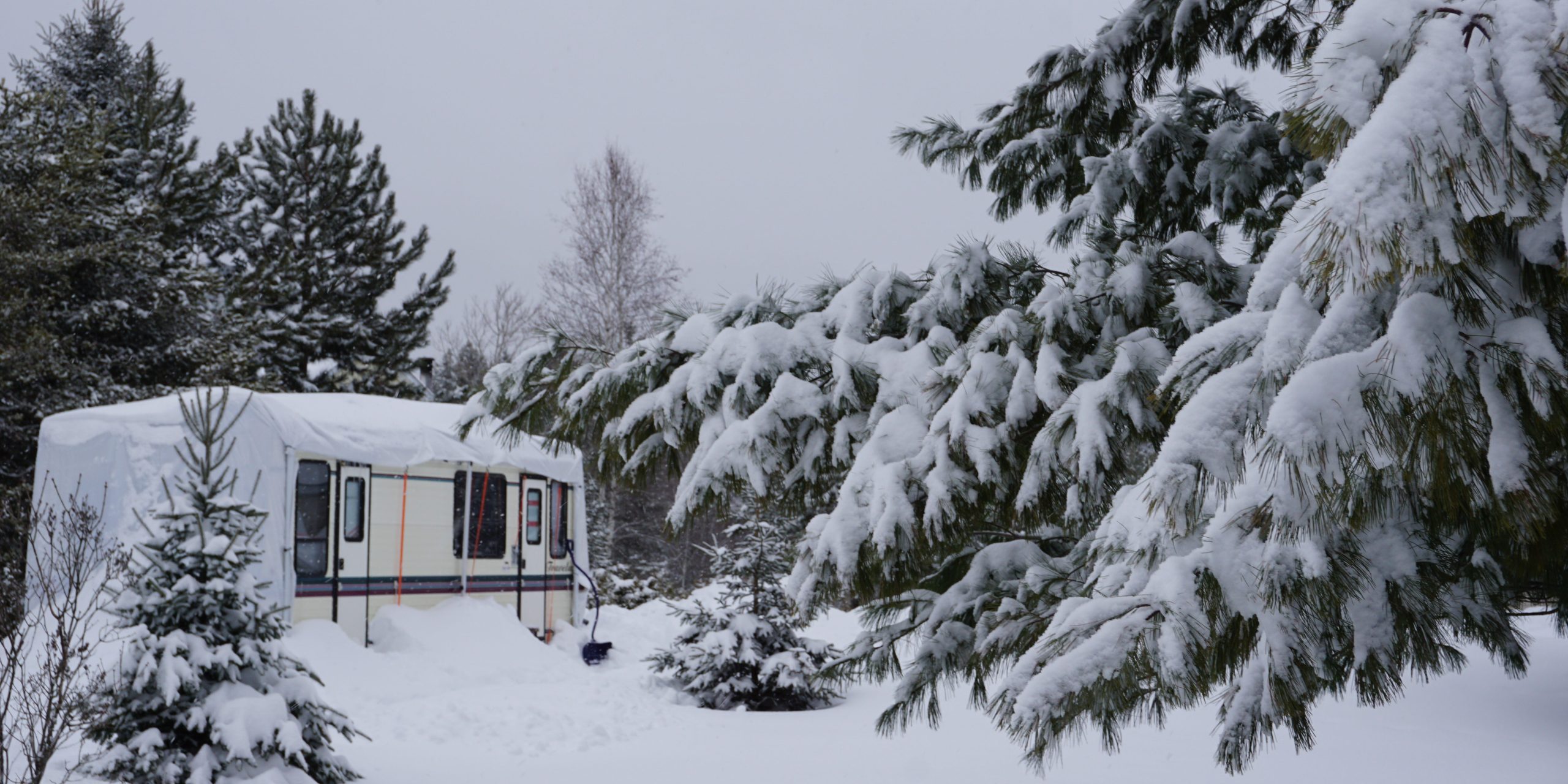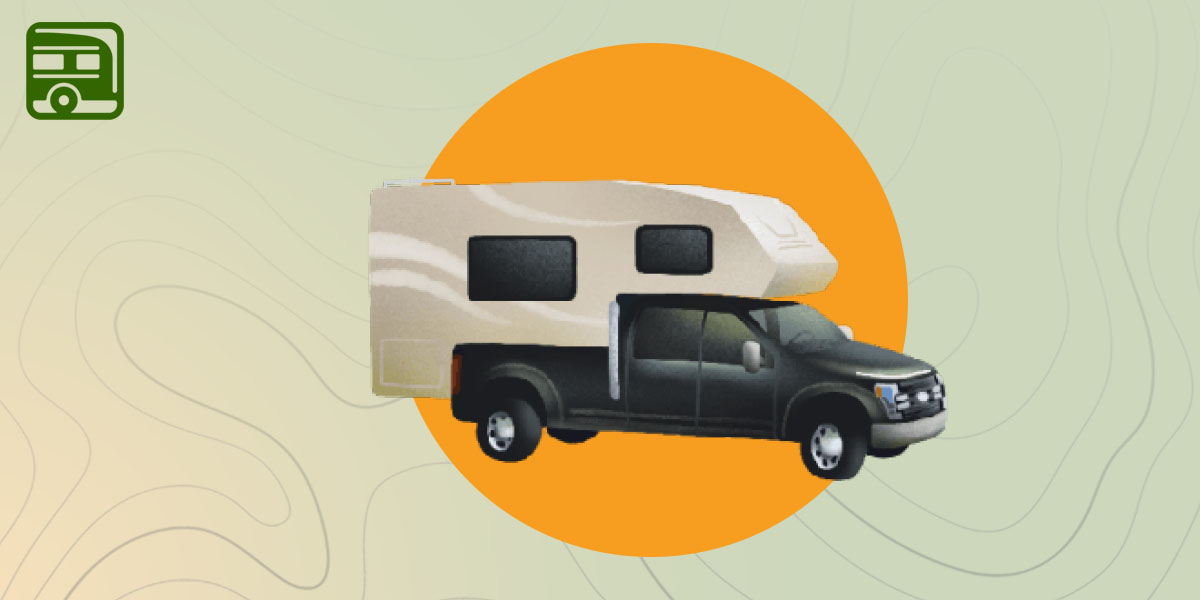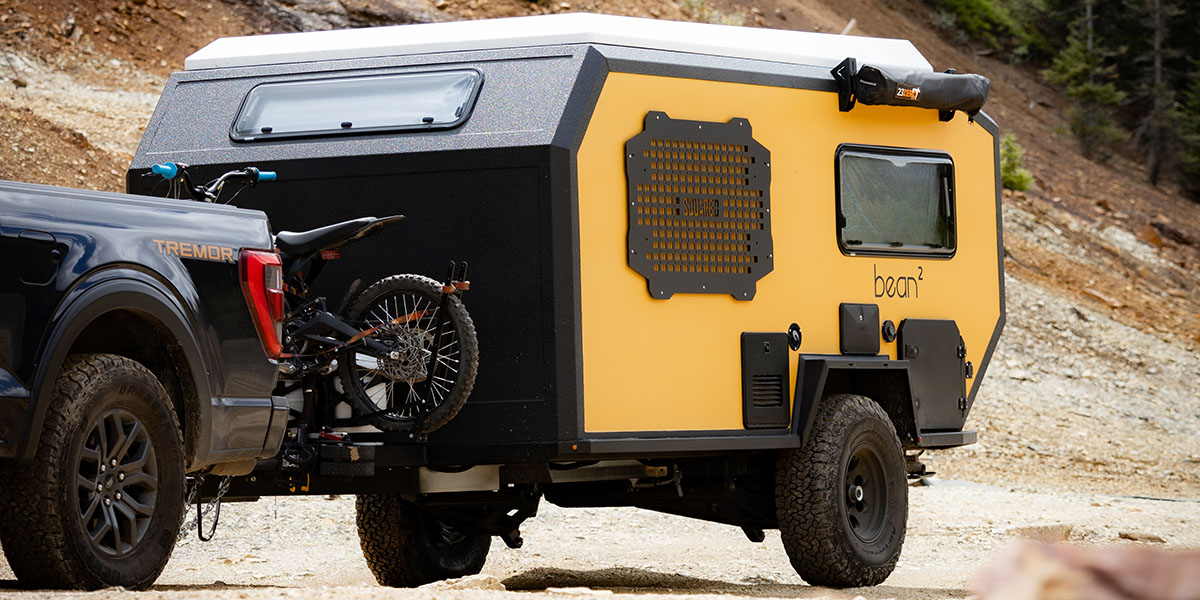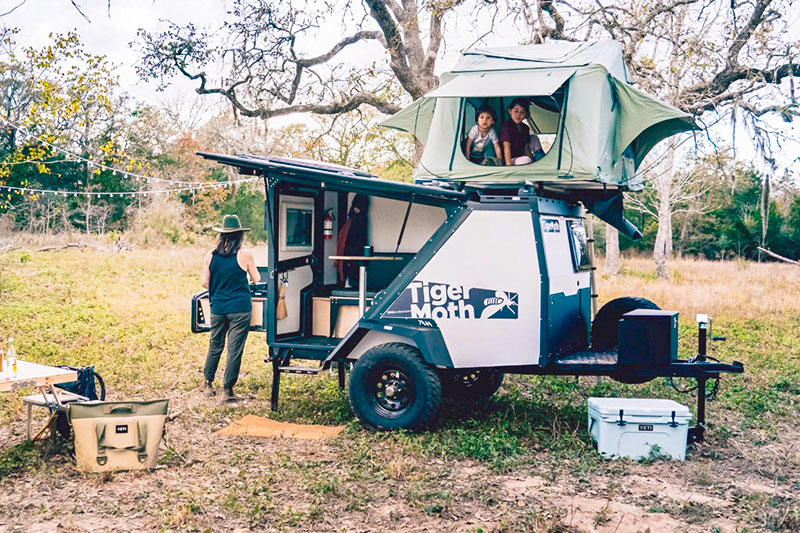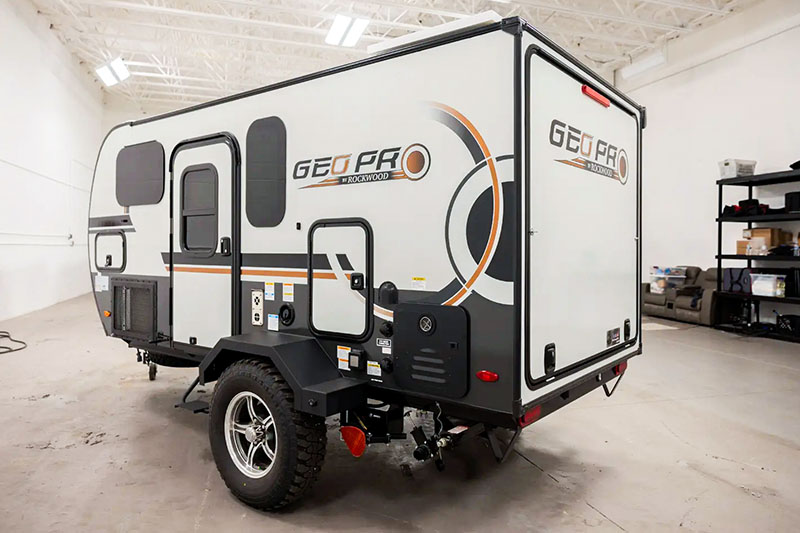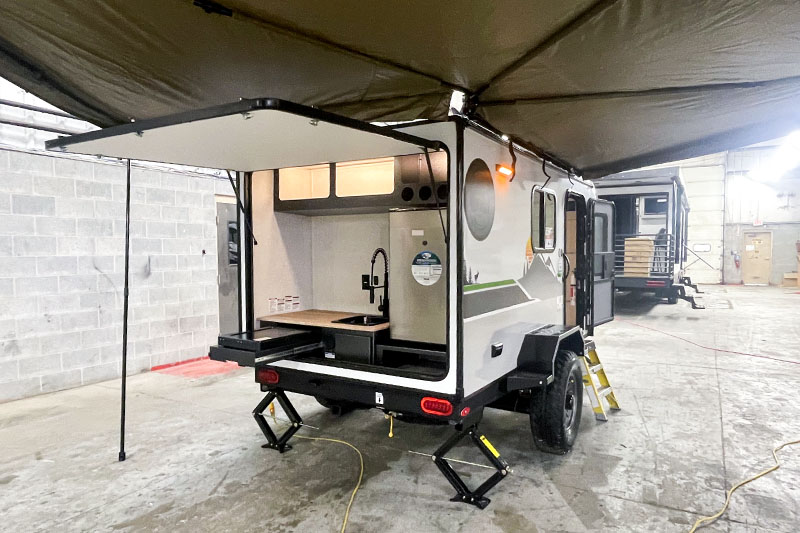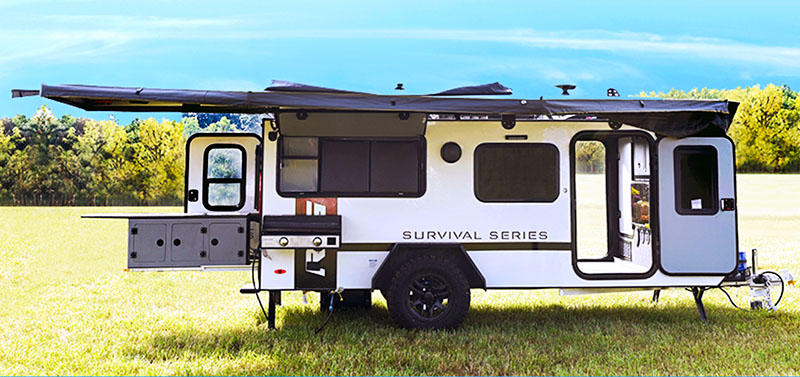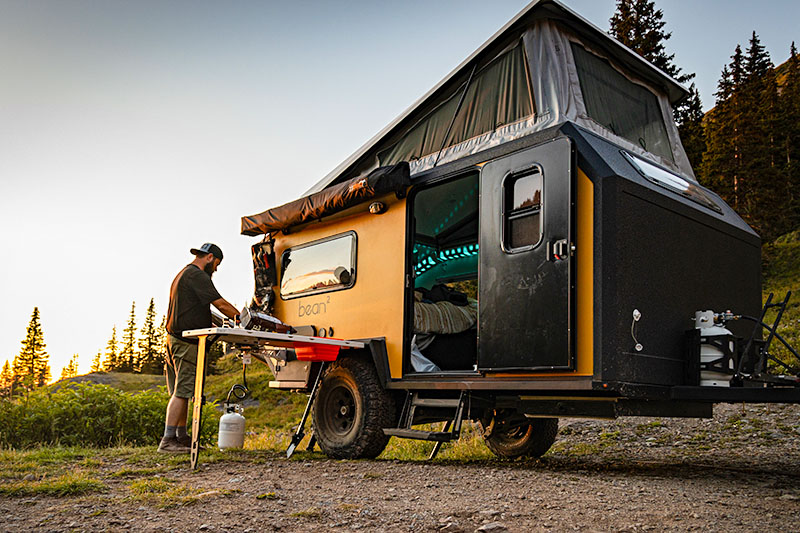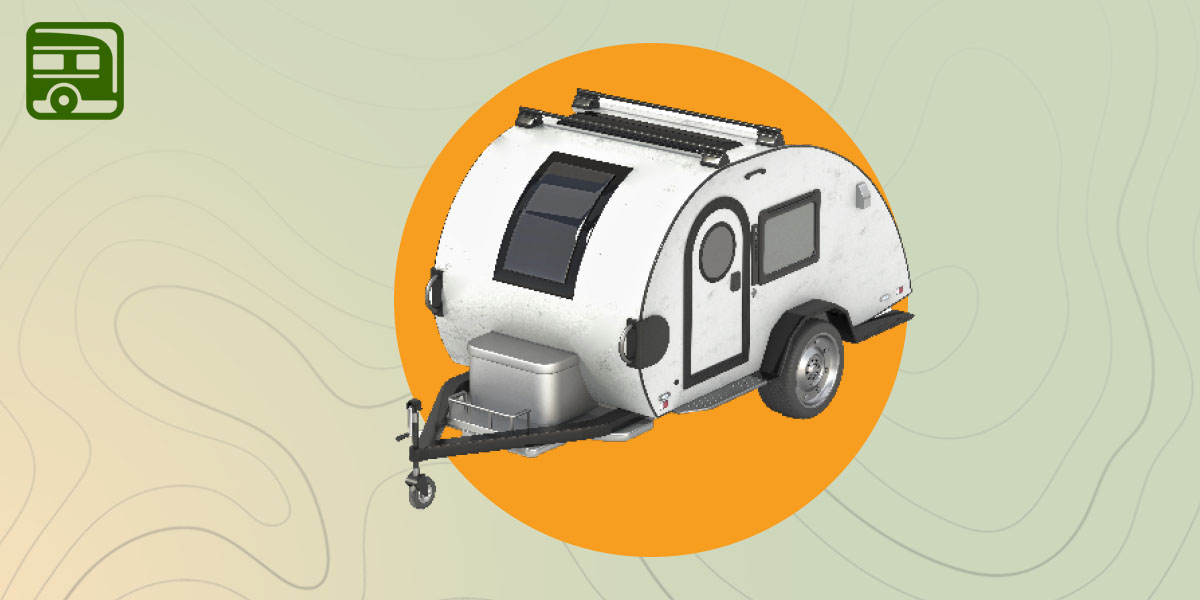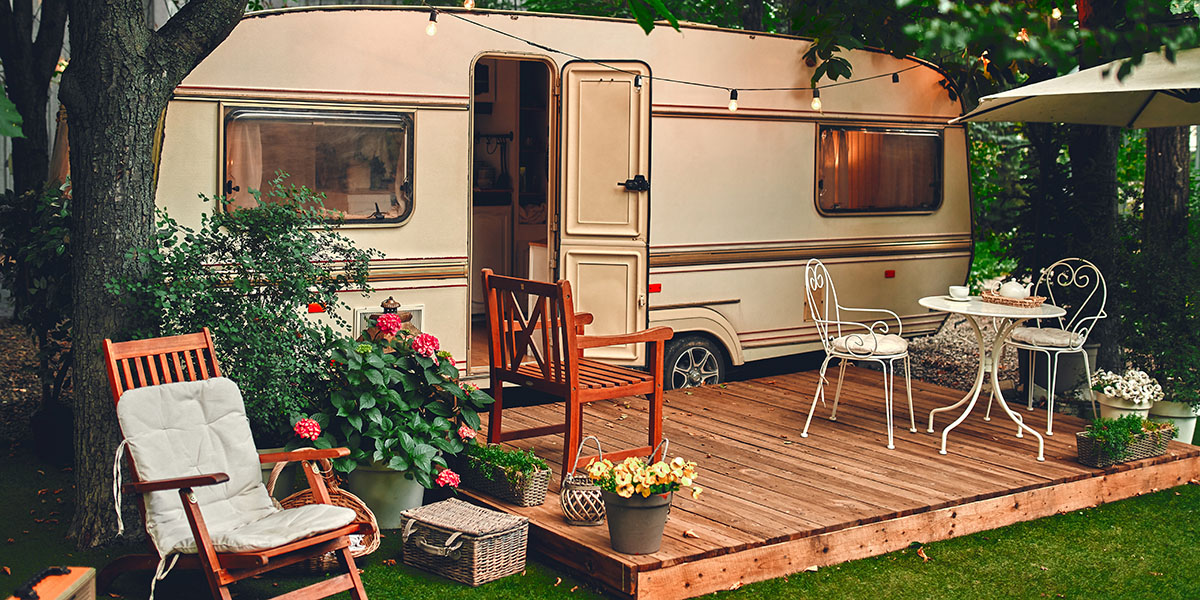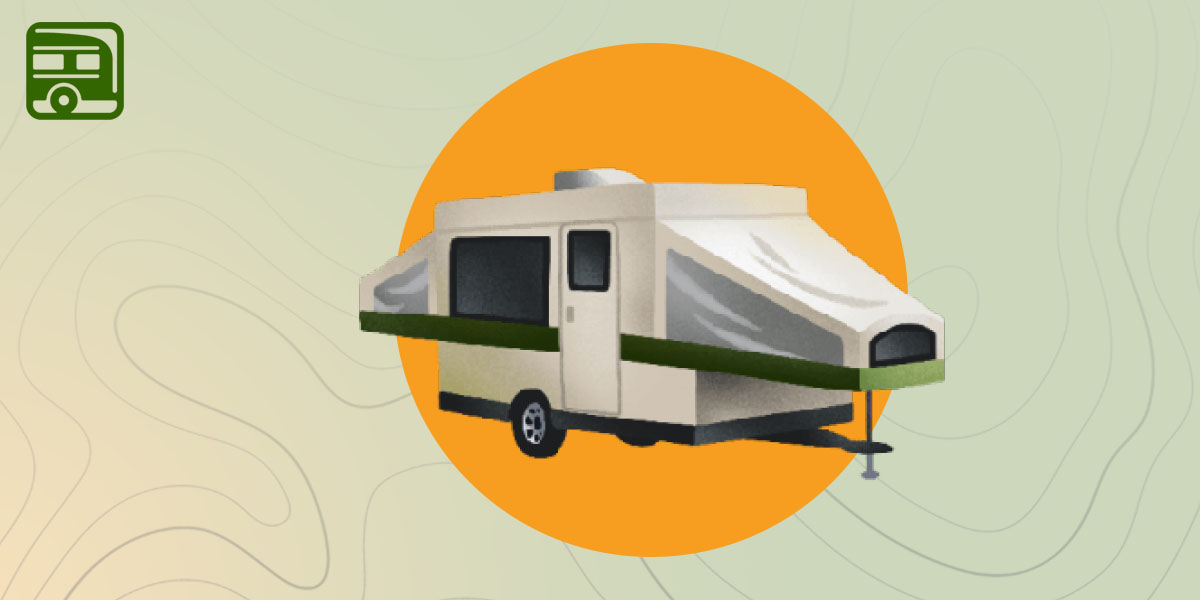This is America, so let’s honest. Our first inclination to almost anything is that bigger is probably better. We want big sodas. Massive TVs. And RVs that are loaded with both amenities and storage. The thing is, in the RV world, every extra thing is weight. And the bigger it is, the bigger the vehicle has to be to tow it. (Which means you might need a truck or a bigger truck). But what if you want to go old-school American. You know, pioneering. Traveling light. Are there RVs that you don’t even need a truck for? Are there RVs that you can … tow with your car?
Rest easy. It’s not a dumb question. There are a decent number of smaller trailers that you can possibly tow with the car you have now. (Folks with adventure-focused vehicles like Subarus and Jeeps especially might appreciate some of these units.) These trailers stand out for for their ability to be easy towing. And garageable. And, always love this, affordable. All while being rather functional RVs.
But first …
How Do I Know What I Can Tow?
Always a great question. Car and RV salespeople alike are going to tell you that your car can pull a surprising amount. (You might be quite surprised by the number in your manual even). But there’s another number that’s even more important than pull. It’s carry.
You see all trailers rely on the tow vehicle to carry about 15 percent of their total weight. Fortunately your vehicle will tell you how much weight it can carry with a placard somewhere near or in the driver door jamb. So, know this number before you make any trailer decision. Remember that you have to consider what’s in the vehicle. Got tents and Porta Potties? Got your in-laws and your Saint Bernard? All of that counts against the available capacity of your vehicle’s cargo carrying.
The Oft-Forgotten Towing Factor
Another important consideration is the wind. If you’ve noticed that all vehicles are starting to look alike, there’s a reason. They’re designed to cut through the wind. But a big, boxy trailer typically isn’t. S, the larger the front of the trailer, the more power it takes to overcome the wind resistance.
There’s more to it (and your vehicle’s owner’s manual likely will talk about “frontal area” on anything you can tow), so you might have to dig the manual out of the storage locker. But that’s not a bad thing.
So, know that I chose these smaller trailers not only because they’re light, but because they also won’t create a tremendous amount of drag as you tow with a car.
Now. let’s go lite and take look at five trailers you can tow with a car.
5 Trailers You Can Tow with a Car
SylvanSport Go Easy TraiLOFT
Sylvan Sport, out of North Carolina, builds some very innovative towable campers. And the SylvanSport Go Easy TraiLOFT is absolutely that. The Go Easy is a very light trailer that can be used to carry kayaks, bicycles, or even that load of green waste down to the garbage dump. This very flexible trailer is designed to enjoy the great outdoors. However, it can also be used when you just got that huge TV or a new fridge at the local home improvement store. So, it truly is a problem solver.
But what is really cool is that you can combine this flexibility with SylvanSport’s LOFT roof-top tent. And now you’re truly ready for outdoor adventure.
If you’re truly planning on bringing lots of stuff with you, it might be possible to put the roof-top tent on your vehicle and have the entire Go Easy trailer for bikes and camping gear. The very compact size of this trailer means you could forget it’s behind you when you tow with a car. Even so, the capabilities and incredible flexibility of this design are unmatched. Plus, it’s useful both for getting away from it all. (And, mentioned, for a lot of tasks around the house.)
In addition to the standard version, there’s also a Go all-terrain model which offers more functionality. Its wheel and suspension package that makes it an ideal companion for off-road vehicles.
Length: 10 feet • Height: 2 feet 11 inches (empty trailer) • UVW: 235 pounds • MSRP $3,695
Jumping Jack Jump Up Explorer 4×6 Utility
Jumping Jack trailers are another example of someone taking a utility or flat-bed trailer and making it so much more. The Jumping Jack Jump Up tent trailer is available in several sizes, but the smallest one fits in our criteria here. What you have is an open utility trailer that you could also use for home improvement projects. (Or for helping that friend move, if you mistakenly answered the phone.)
But don’t be fooled into think that’s all this is. There’s also an entire tent system that fits into the trailer. So, now you’ve got an RV as well. But what really caught my eye is that, with the tent collapsed into the trailer, there are walls that fold over the top of the tent that enable you to still carry things. Not just little things, either, but things like kayaks, e-bikes, and even ATVs.
As for being an RV, the tent itself sets up really easily. You simply flip the sides over which reveals the tent. Then you pull the tent up. It sort of springs into position pretty easily and quickly. Tents nowadays are so different than when I was a kid, but we just needed to keep the dinosaurs at bay.
Length: 10 feet 2 inches • Height: 4 feet (empty trailer) • UVW: 950 pounds • MSRP $8,495
Rockwood Tent OTG 190TG
Rockwood is an unusual company. They build everything from these very small pop-up tent trailers to large, luxurious fifth wheels and travel trailers. New for 2025 is the company’s OTG series tent trailers, which are intended to be an alternative to camping in a tent. Since these are soft-sided pop-up tent trailers, there is some of that tentiness (Just to keep you feeling at home as you transition to RV life.)
The smallest of these is the 190OTG, which offers no water and no propane system. It’s simply a dinette and a 60-inch by 80-inch queen-size bed in a pop-up trailer. The dinette in this folds down to be a 33-inch by 80-inch bed. There’s a dining table with the dinette, of course, but a second table could serve as a bed-side table, kitchen table, or whatever.
That table has an open space below it where the portable toilet is stored for transport. There’s also a bit of cabinet space in here. This is a very simple trailer but might be a great transition from actual tent camping into the beginning of the RV lifestyle.
Length: 13 feet 10 inches • Height: 4 feet 10 inches (closed trailer) • UVW: 980 pounds • MSRP $8,995
Aliner Scout Lite
Aliner products have been a fixture for four decades now. These pop-up A-frame style trailers are very small and garageable when folded down. But when the top is deployed, they provide surprisingly spacious interiors.
One of the biggest hurdles many people have when considering one of these is how difficult it might be to raise the roof, but that’s not the case at all. Even the most diminutive camper will find that they can raise the roof without difficulty. (It’s done with the assistance of built-in struts.)
This is the smallest offering from Aliner. You can also get models with dormers that further expand the interior. Even so, the Aliner Scout Lite can sleep up to four friendly folks with a couch at the front that converts to a 56-inch by 76-inch bed and a dinette at the back that can become a 46-inch by 76-inch bed.
Since this is a hard-sided trailer when fully deployed, more campgrounds are comfortable with these. These are still well made with composite walls and a torsion axle suspension along with a high-performance ceiling vent fan.
Length: 13 feet • Height: 5 feet 2 inches (closed trailer) • UVW: 1,190 pounds • MSRP $19,445
Blue Mountain Campers Appalachian
This might be the most traditional offering in this collection as the Blue Mountain Campers Appalachian is actually a more traditional fully enclosed trailer. While it has an almost teardrop shape, it’s really configured a lot like a pickup camper with the entrance at the rear.
The North Carolina company boasts that the exterior of this trailer is all human-made composites to reduce the chance of water damage. The interiors are a very pleasant birch plywood. There are other examples of premium components including the dual-pane windows. This trailer also offers optional heating and air conditioning as well as a 12-volt mini fridge.
Like the rest of this group, these can fit into a garage, but that means that the interior height is just five feet. However, a lower height also makes for less wind resistance so you have to take your compromises as they come.
Length: 13 feet • Height: 6 feet 8.5 inches • UVW: 1,570 pounds • MSRP $13,850
When I Tow with a Car, I Should Remember …
One of the common things about these little campers is that they may have fewer features than larger RVs. Missing from the list of features on most of these are toilets, refrigerators, and cooking surfaces.
As someone who loves traveling, we have a fully-featured travel trailer. However, we also sometimes camp completely off the grid using our pickup camper and tent. When we do that, we have a whole list of great camping accessories that complete this package. So, we really don’t feel like we’re missing anything. The same packing principles would apply if you had a more minimalist RV that you can tow with a car.
These small, high-quality trailers can be a great way to get out and enjoy this country’s beautiful places while still having a great place to sleep.
